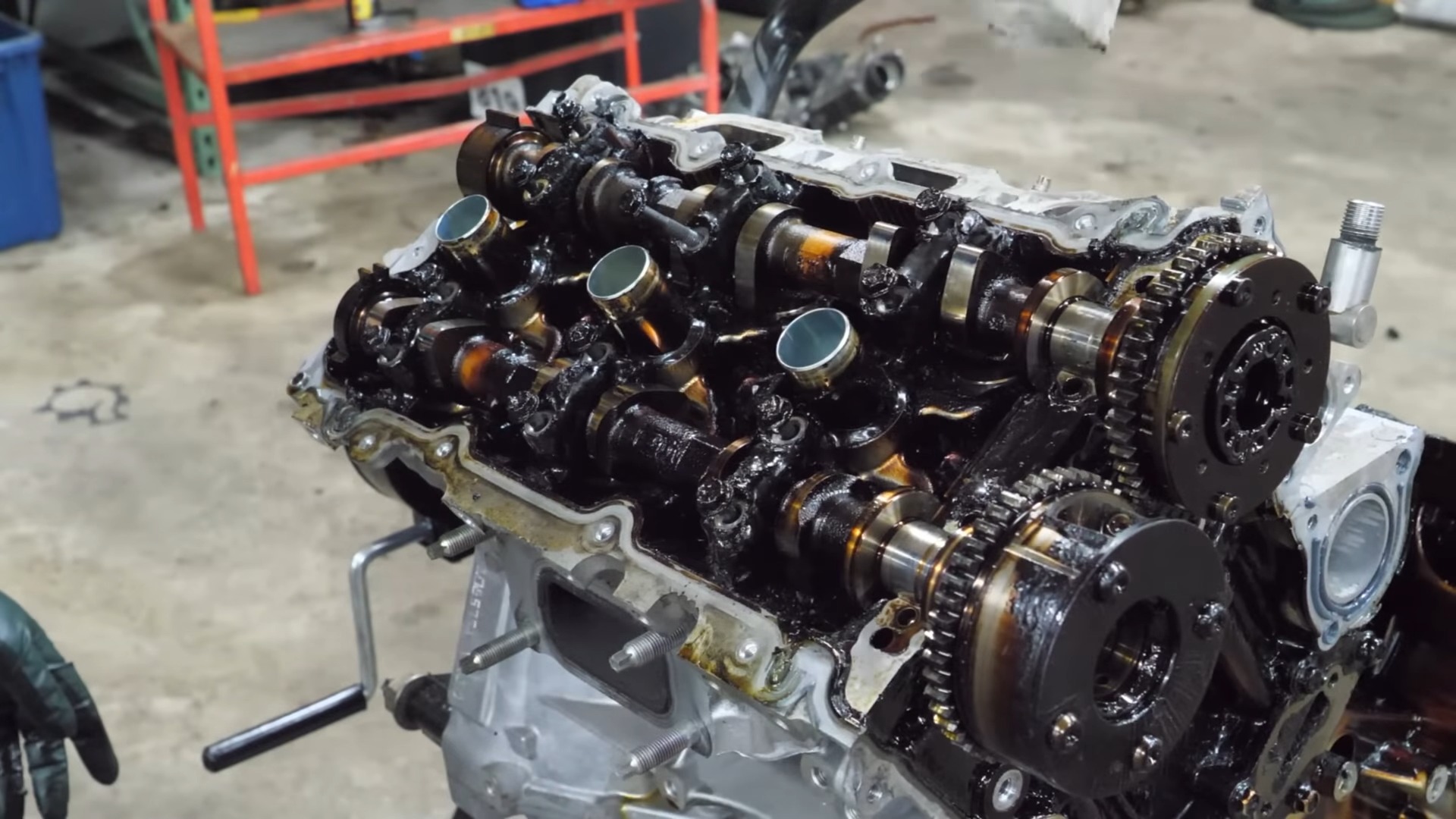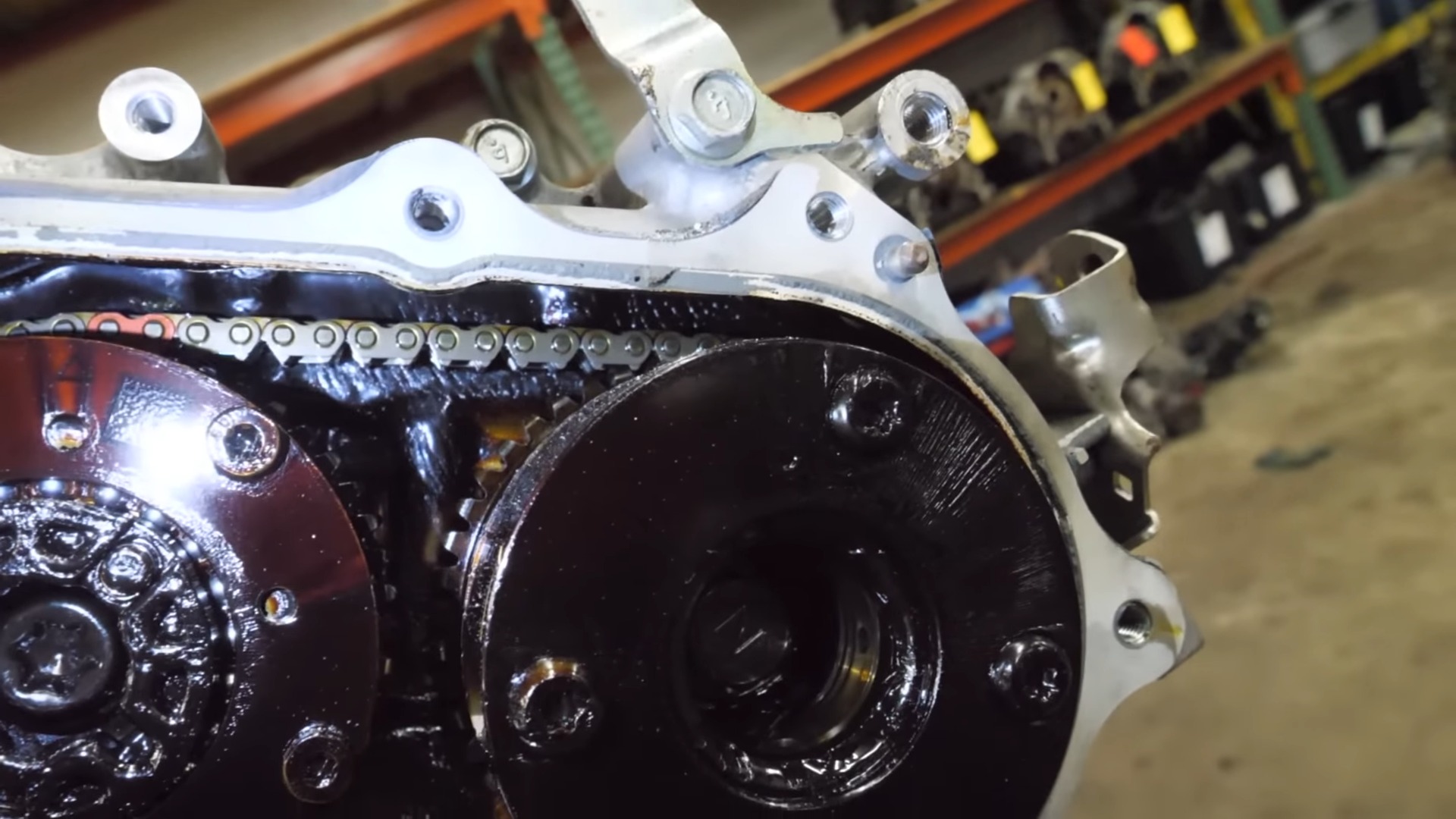

You’re supposed to change your oil every 5,000 to 10,000 miles if you want your car to live a long and happy life. In contrast, running 60,000 miles with only a single oil change is a surefire way to harm your engine, as this detailed teardown demonstrates.
The video comes to us from the YouTube channel I Do Cars. Host Eric regularly pulls apart cars and engines for repairs or, in extreme cases, autopsies. In the case of this VR30DDTT engine from a 2016 Infiniti Q50, it’s very much the latter. The dual-overhead cam, twin-turbo engine originally made around 300 horsepower.

The engine came to Eric from another shop to be parted out, as it was running poorly and throwing cam sensor codes. Typically, an engine would be in great condition after just 60,000 miles. In this case, the aftermarket oil filter suggests the oil has been changed at least once, but based on the engine’s condition, it doesn’t seem like it’s been done more often than that. This engine is a textbook case of excessive wear due to deferred maintenance.
Once the valve covers come off, the damage is clear. “Sweet molasses,” says Eric, which just about sums it up. The oil has turned into a rich sludge, coating the top of the engine. With the cam gear covers removed, we’re able to see more goop in the top of the engine. That’s terrible for engine health, given the tight orifices in the variable cam gears and actuators.


As expected, the oil pan is full of sludgy, near-solid oil. Teardown reveals two springs mysteriously lodged in the oil pickup, while timing cover removal turns up a broken timing chain. We also get to see multiple bolts completely hidden under sludge and a cam gear that has been broken apart. Other highlights include valve impacts on a piston and incredibly gooey cams.
The key lesson is in the value of regular oil changes. Over time moisture and heat make oil into a sludge or even a jelly-like consistency. This can clog oil channels and reduce oil pressure in the engine, causing excessive wear to rotating assemblies like the cams and crankshaft. This engine shows plenty of evidence, with the main crank bearings showing significant damage inconsistent with the car’s low mileage. It does bear noting, though, that the oil was remarkably free of metallic contamination.


We’ve seen some great engine teardowns before, too. A 300,000-mile Toyota Camry engine showed us the negative impacts of poorly-designed piston rings, while a 700,000-mile Power Stroke diesel proved a great testament to American engineering. Looking inside reveals the true details of an engine’s health, something that’s comparatively hard to determine from subjective driving experiences or external examinations.
Oil changes don’t need to be as frequent as in decades gone by due to improvements in lubricant technology and engine design. Getting to 60,000 miles on a single oil change is just asking for trouble. “There is no situation in which [changing] oil is more expensive than an engine,” says Eric, “because when you buy an engine, you still have to buy oil.”
Got a tip? Let the author know: lewin@thedrive.com